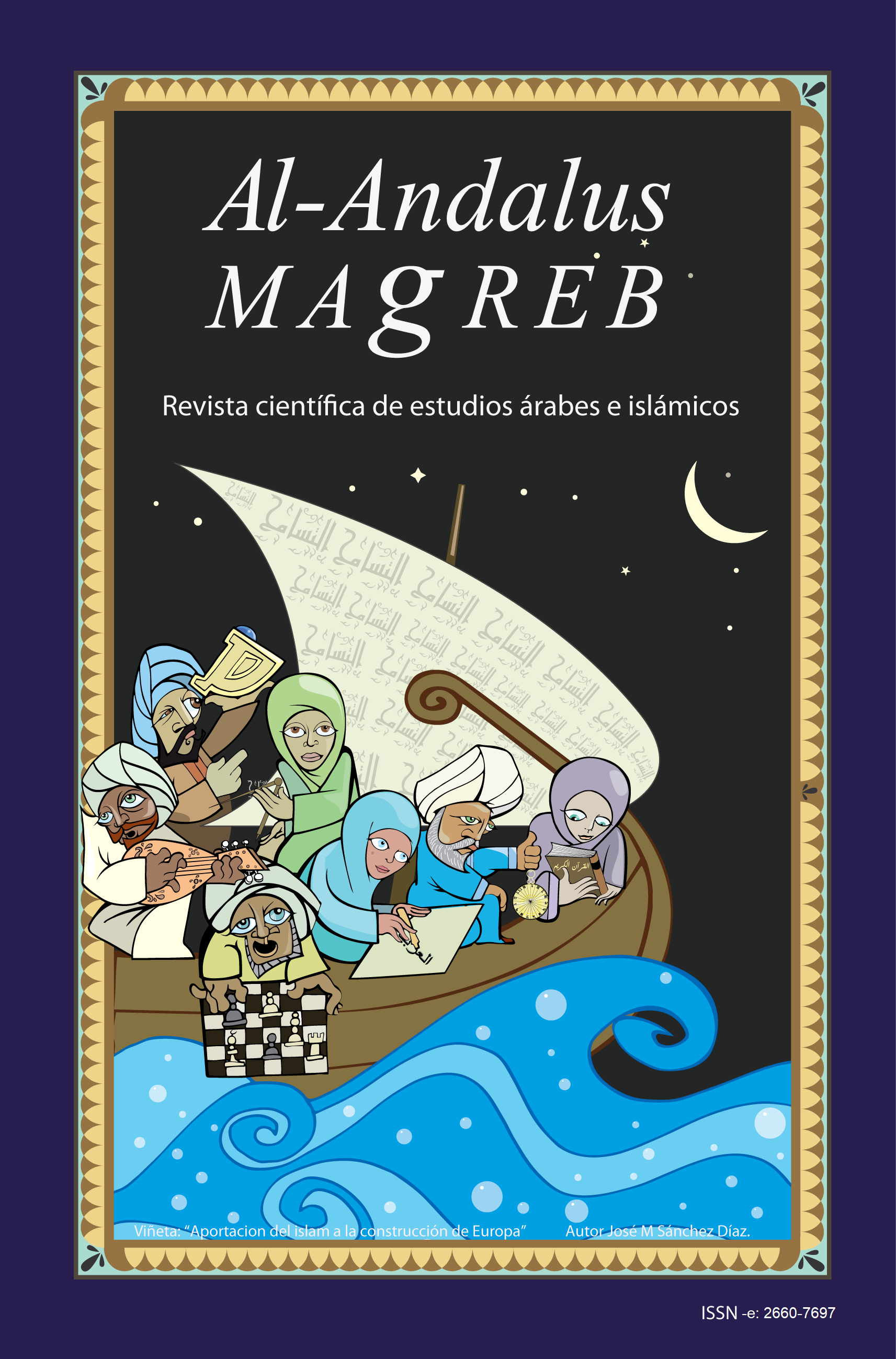The status of languages in Morocco: a variable in the hands of power and institutional discourse

Downloads
DOI
https://doi.org/10.25267/AAM.2024.v31.107Info
Abstract
The Moroccan constitutional reform of 2011 introduces a significant development for the field of linguistics: the recognition of the Berber as an official language along with Arabic, considering it “an advantage shared by all Moroccan population without exception”. Moreover, the new constitutional text refers to Hassānīya specifically as “an essential part of Moroccan cultural identity” and highlights the State’s role in protecting the dialects and cultural expressions used in Morocco, which means that, for the first time, the situation of pluriglossia and multilingualism that characterizes the country is constitutionally recognized. With these developments at the outset, we will translate and analyze the constitutional reform chapters related to sociolinguistics and, subsequently, a brief exploration of the historical evolution that transformed the different languages that make up Morocco’s linguistic reality -whether these languages mentioned into the new constitutional text or not-, uses and functions, will be included. Ultimately, the objective is to establish whether the status of the languages recognized in the Reform portray an accurate linguistic landscape of today’s Morocco, and to give us an understanding of the underlying reasons behind the recognition or absence of the languages in use in the Alawite kingdom today, such as Fuṣḥà, Dāriŷa, Hassānīya, Berber, French and Spanish.
Keywords
Downloads
How to Cite
License

This work is licensed under a Creative Commons Attribution-NonCommercial-NoDerivatives 4.0 International License.
Those authors who have publications with this journal, accept the following terms:
a. Authors may retain their copyright and guarantee the journal the right of first publication of their work, which will be simultaneously subject to Licencia de reconocimiento de Creative Commons that allows third parties to share the work as long as its author is indicated. and its first publication this journal.
b. Authors may adopt other non-exclusive license agreements for the distribution of the version of the published work (eg: deposit it in an institutional electronic file) provided that the initial publication in this journal is indicated.
c. Authors are allowed and recommended to disseminate their work through the Internet (eg: in institutional telematic files or on their website) once the manuscript is accepted, which can lead to interesting exchanges and increase citations of the published work. (See El efecto del acceso abierto).
References
‘AMĀRĪ, Wafā’ (2020): «Al-amāzīgīya fī-l-Magreb: baīna nuṣūṣ al-qawānīn wa wāqiʿa-ltaṭbīq», Sky News Arabia [en línea], disponible en: https://www.skynewsarabia.com/middle-east/ ا م لأ از یغ ی-ة ال مغرب- نصوص- القو انین-- 1375826
و وقاع- التط بیق.
ÁLVAREZ, Claudio (2022): «El Frente Polisario responde», El País [en línea], disponible en: https://elpais.com/opinion/2022-04-11/el-frente-polisario-responde.html.
AMILHAU, Amélie.; et al. (2007): «Darija le vrai débat», Le Journal Hebdomadaire, nº 31, pp. 22-29.
BBC NEWS MUNDO (2022): «Sahara Occidental: 5 claves para entender este conflicto olvidado», BBC News Mundo [en línea], disponible en:https://www.bbc.com/mundo/noticias-internacional-55350989.
BENABDALLAH, Mohamed Amine (2001): «Respecto a la Evolución Constitucional en Marruecos», REMALD, nº 36, pp. 9-14 [en línea], disponible en: http://idpbarcelona.net/docs/recerca/marroc/pdf/doc_benabdallah_evolucion_cast.pdf.
BERNARD-MAUGIRON, Nathalie (2014): «Pluralismo y diversidad identitaria», Afkar/ideas, nº 41, pp. 28-30 [en línea], disponible en: https://www.iemed.org/publication/pluralismo-y-diversidad-identitaria/.
CAMPS, Gabriel (1984): «Avertissement», Encyclopédie berbère, pp. 6-48 [en línea], disponible en: https://doi.org/10.4000/encyclopedieberbere.765.
CHAKER, Salem (2004): «Langue et littérature berbères», Clio.fr, pp. 1-10 [en línea], disponible en: https://ssl.clio.fr/BIBLIOTHEQUE/pdf/pdf_langue_et_litterature_berberes.pdf.
COHEN, David (1963): Le dialecte arabe Hassaniya de Mauritanie, Limoges: Imp. A. Bontemps.
FERGUSON, Charles Albert (1959): «Diglossia», Word, vol. 15, pp. 325-40 [en línea], disponible en: https://doi.org/10.1080/00437956.1959.11659702.
FERRANDO FRUTOS, Ignacio (2001): Historia de la lengua árabe: nuevas perspectivas, Zaragoza: Universidad de Zaragoza.
FERRIÉ, Jean-Noël (2013/2014): «Marruecos tras la reforma constitucional», Afkar/ideas, nº 40, pp. 35-37. [en línea], disponible en: https://www.iemed.org/wp-content/uploads/2021/07/Marruecos-tras-la-reforma-constitucional.pdf.
GARCÍA MOSCOSO, Francisco (2002): «Situación lingüística en Marruecos: Árabe marroquí, beréber, árabe estándar, lenguas europeas», Al-Andalus Magreb: Estudios árabes e islámicos, nº 10, pp. 167-186. [en línea], disponible en: https://revistas.uca.es/index.php/aam/article/view/7661/7600.
GARCÍA MOSCOSO, Francisco (2010): «La pentaglosia en Marruecos. Propuestas para la estandarización del árabe marroquí», MEAH (AI), nº 59, pp. 45-61. [en línea], disponible en:https://digibug.ugr.es/bitstream/handle/10481/6876/Moscoso10.pdf?isAllowed=y&sequence=1.
GARCÍA MOSCOSO, Francisco (2016): «Argumentos en defensa del árabe literal en Marruecos. Identidad y conciencia lingüística», Colección Actas VI congreso de árabe marroquí, nº 14, pp. 165-191. [en línea], disponible en: https://www.academia.edu/31483635/ARGUMENTOS_EN_DEFENSA_DEL_%C3%81RABE_LITERAL_EN_MARRUECOS .
LÓPEZ GARCÍA, Bernabé (2011): «Reforma constitucional en Marruecos: entrevista con Mohamed Tozy por Bernabé López», Afkar/ideas, nº 31, pp. 16-20. [en línea], disponible en: https://www.iemed.org/wp-content/uploads/2011/09/Reformaconstitucional-en-Marruecos.pdf.
FUENTE COBO, Ignacio (2006): «La dimensión militar y diplomática del conflicto del Sahara», El conflicto del Sahara Occidental, Madrid: Universidad Carlos III, pp. 11-143. [en línea], disponible en: https://publicaciones.defensa.gob.es/media/downloadable/files/links/P/D/PDF69.pdf.
NORRIS, Harry Thirlwall (s.f.): «Mūrītāniyā», Encyclopaedia of Islam, Second Edition. [en línea], disponible en: https://referenceworks.brillonline.com/entries/encyclopaedia-ofislam-2/muritaniya-COM_0802.
PEREGIL, Francisco (2021): «Marruecos, con la parabólica pendiente del extranjero», El País. [en línea], disponible en: https://elpais.com/television/2021-08-11/marruecos-con-laparabolica-pendiente-del-extranjero.html.
RUIZ MIGUEL, Carlos (2012): La “Constitución” marroquí de 2011. Análisis Crítico, Madrid: Dykinson.
SALGADO SUÁREZ, Rosa (2007): «La realidad lingüística actual de Marruecos», Globalaffairs, nº 5, pp. 58-62. [en línea], disponible en: https://www.academia.edu/10463488/La_realidad_lingü%C3%ADstica_actual_de_Marruecos.
SALGADO SUÁREZ, Rosa (2012): «La diversidad lingüística de Marruecos», Centro Mohammed VI para el diálogo de las civilizaciones, pp. 27-42. [en línea], disponible en: https://www.academia.edu/10463695/La_diversidad_ling%C3%BC%C3%ADstica_de_Marruecos.
SUÁREZ COLLADO, Ángela (2012): «Entre contestación y cooptación: el movimiento amazigh durante el reinado de Mohammed VI», Revista De Estudios Internacionales Mediterráneos, nº 13 [en línea], disponible en: https://revistas.uam.es/reim/article/view/887/875.
TAINE-CHEIKH, Catherine (1994): «Le Ḥassāniyya de Mauritanie, un dialecte non-marginal de la périphérie», Actas del Congreso Internacional sobre Interferencias Lingüísticas Arabo-Romances y Paralelos Extra-Iberos, pp.173-199. [en línea], disponible en:
https://halshs.archives-ouvertes.fr/halshs-00458492/document.
VICENTE, Ángeles (2008): «Génesis y clasificación de los dialectos neoárabes», CSIC-UZACortes de Aragón-Instituto de Estudios Islámicos y de Oriente, pp. 19-67. [en línea], disponible en: https://digital.csic.es/bitstream/10261/5650/1/Clasificaci%C3%B3n%20dialectos%20
%C3%A1rabes.pdf.
VICENTE, Ángeles (2011): «La diversidad de la lengua árabe como lengua de comunicación». Miscelánea de Estudios Árabes y Hebraicos. Sección Árabe-Islam, nº 60. pp. 353-370. [en línea], disponible en: https://digibug.ugr.es/bitstream/handle/10481/18628/VVicente11.
pdf?sequence=1&isAllowed=y.
VICENTE, Ángeles (2011): «La presencia de la lengua española en el Norte de África y su interacción con el árabe marroquí», RILI, nº 18, pp. 59-84. [en línea], disponible en: https://www.academia.edu/2535550/_La_presencia_de_la_lengua_espa%C3%B1ola_en_el_Norte_de_%C3%81frica_y_su_interacci%C3%B3n_con_el_%C3%A1rabe_marroqu%C3%AD_ .






